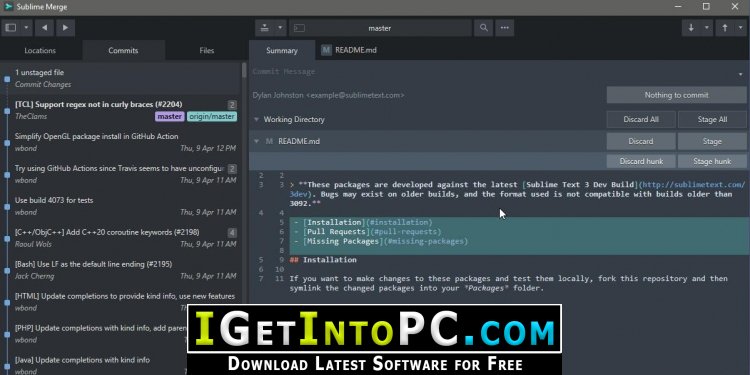

If Developer A tries to edit code that Developer B is editing a conflict may occur. Sometimes multiple developers may try to edit the same content.

WordPress became a very popular choice when it comes to content management systems and building websites. Manjaro is a great desktop operating system for all range of tasks while Debian is a solid choice for servers. We run Manjaro and Debian operating systems in our office. When writing our codes, we use Sublime Text and Visual Studio Code depending on the project.

I highly recommend giving Visual Studio Code a try! See moreĪt, we use HTML5, CSS 3, Sass, Vanilla.JS and PHP when building our premium WordPress themes and plugins. The speed of this IDE is blazing fast, and I wouldn't go back to using PhpStorm anymore. It has support for everything I need with the plugins and the integration with Git is amazing. After watching some more tutorial videos I noticed that everyone was using Visual Studio Code. PhpStorm is kind of slow, I found that Prettier was taking a long time to format my code, and it just was lagging a lot so I was looking for alternatives. This was amazing all the features in PhpStorm I loved, the debugging features, and the control click feature when you click on a dependency or linked file it will take you to that file. I finally converted over to PhpStorm as I was working with Magento and Magento as you know is mainly #PHP based.
#Sublime merge merge conflict tool full#
I find Sublime Text lacks some functionality, after all it is just a text editor rather than a full fledged IDE. I kept using Sublime Text for about 4-5 years. I found the speed amazing compared to some other tools at the time. I started coding in Sublime Text because all of the tutorials I was doing back then everyone was using it. I've been in the #frontend game for about 7 years now. Other Benefits: Kubernetes is backed by the Cloud Native Computing Foundation (CNCF), huge community among container orchestration tools, it is an open source and modular tool that works with any OS.Scalability: All-in-one framework for distributed systems.Monitoring: It supports multiple versions of logging and monitoring when the services are deployed within the cluster (Elasticsearch/Kibana (ELK), Heapster/Grafana, Sysdig cloud integration).Functionality: Kubernetes as a complex installation and setup process, but it not as limited as Docker Swarm.Applications: An application can be deployed using a combination of pods, deployments, and services (or micro-services).Key features: Easy and flexible installation, Clear dashboard, Great scaling operations, Monitoring is an integral part, Great load balancing concepts, Monitors the condition and ensures compensation in the event of failure.The main reason we have chosen Kubernetes over Docker Swarm is related to the following artifacts: Redis as preferred in-memory database/store (great for caching).PostgreSQL as preferred database system.Amazon S3) for deploying in stage (production-like) and production environments SSLMate (using OpenSSL) for certificate management.nginx as web server (preferably used as facade server in production environment).Heroku for deploying in test environments.



 0 kommentar(er)
0 kommentar(er)
